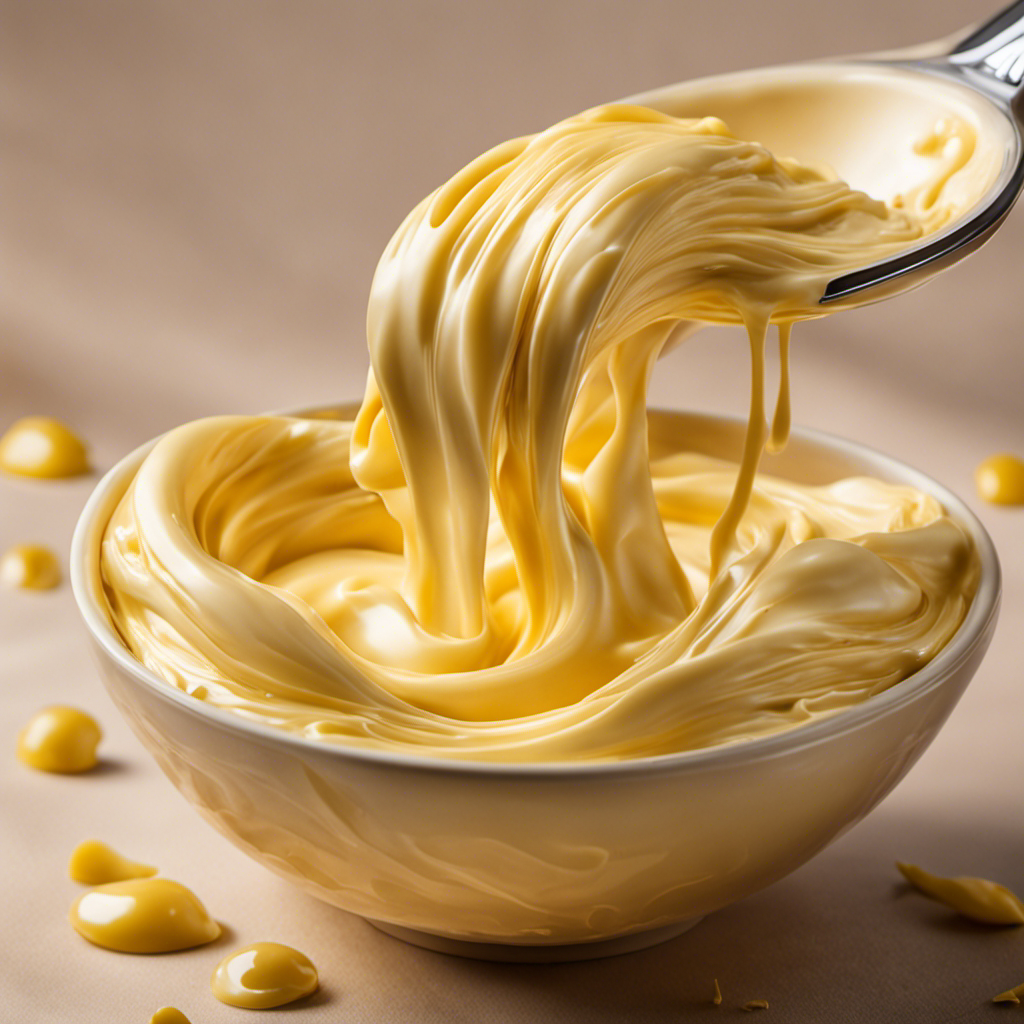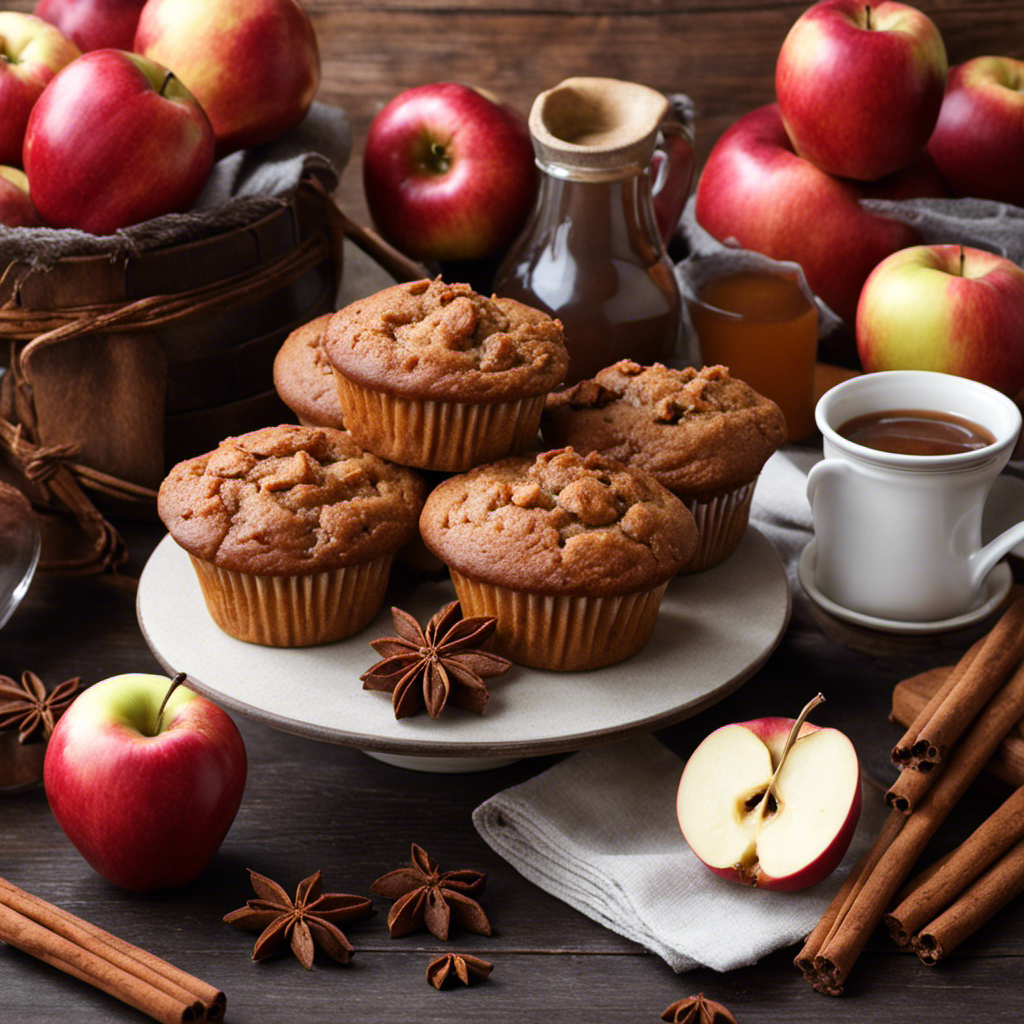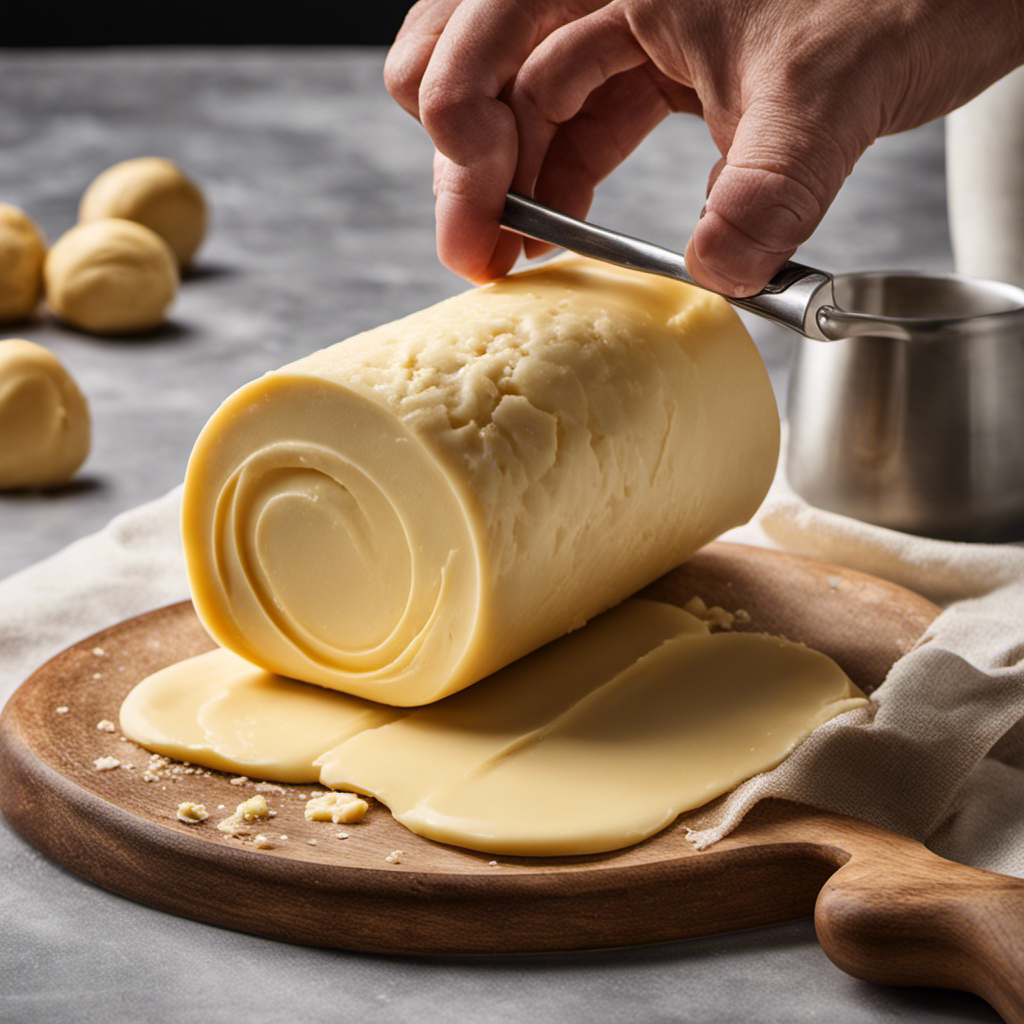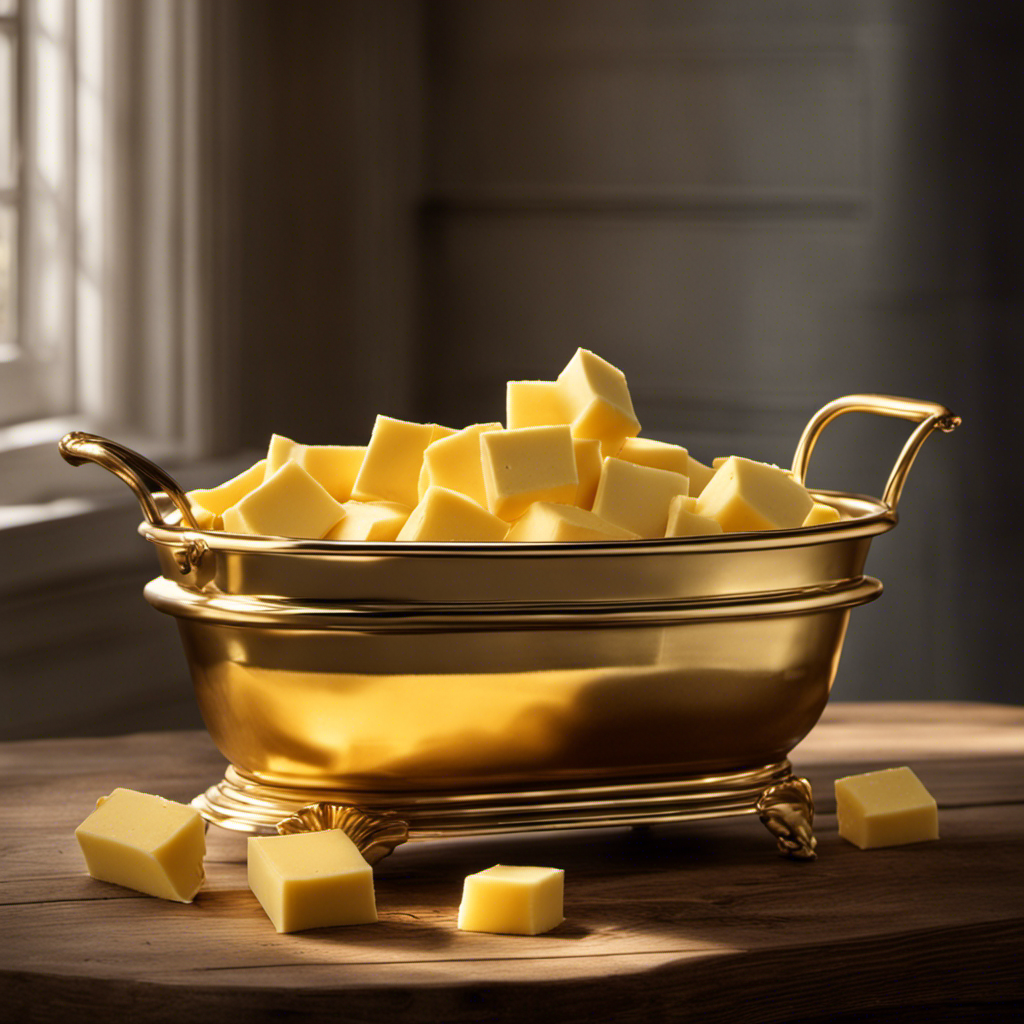Have you stumbled upon Wow Butter before? Let me explain, it’s a truly innovative product.
If you’re like me and have a love affair with peanut butter but can’t indulge due to allergies or dietary restrictions, then Wow Butter is about to become your new best friend. Packed with key ingredients that make it taste just like the real deal, this alternative spread is here to revolutionize your snacking experience.
Let’s dive in and discover what makes Wow Butter so, well, wow!
Key Takeaways
- Wow Butter is made from carefully selected, roasted soybeans that are ground into a smooth paste and mixed with natural oils, sugars, and salt to enhance flavor and texture.
- It is high in protein and heart-healthy unsaturated fats like omega-3 and omega-6 fatty acids, making it suitable for vegetarians and vegans.
- Wow Butter is a safe and allergen-free alternative for those with peanut allergies, as it is free from the top eight allergens including peanuts, tree nuts, dairy, and eggs.
- Compared to peanut butter, Wow Butter has fewer calories, making it a healthier option for weight management, and it provides a variety of nutritional benefits including protein, fiber, and healthy fats.
The Origins of Wow Butter
So, you’re probably wondering where Wow Butter actually comes from, right?
Well, let me break it down for you.
The origins of Wow Butter can be traced back to the humble soybean. This plant, native to East Asia, is the main ingredient in Wow Butter.
The production process starts with the careful selection and harvesting of soybeans. These beans are then cleaned, roasted, and ground into a smooth paste.
Next, a unique blend of natural oils, sugars, and salt is added to enhance the flavor and texture. The mixture is then homogenized to create the creamy and delicious Wow Butter that we all know and love.
It’s important to note that Wow Butter is completely nut-free, making it a safe and tasty alternative for those with allergies.
Key Ingredients in Wow Butter
When it comes to discussing the nutritional benefits of ingredients in Wow Butter, it is important to highlight the key ingredients that make this spread a healthier alternative.
One such ingredient is roasted soybeans, which are not only rich in protein but also contain essential amino acids.
Additionally, Wow Butter is free from major allergens like peanuts and tree nuts, making it a safe and allergen-friendly option for those with dietary restrictions or allergies.
Nutritional Benefits of Ingredients
You’ll be pleased to know that wow butter contains a variety of nutritional benefits from its ingredients. Here are some key points to consider:
-
Nutritional Benefits:
-
High in Protein: Wow butter is made from roasted soybeans, which are a great source of plant-based protein. This makes it an excellent choice for vegetarians and vegans.
-
Heart-Healthy Fats: Unlike regular peanut butter, wow butter is free from saturated fats and cholesterol. Instead, it contains unsaturated fats, such as omega-3 and omega-6 fatty acids, which are beneficial for heart health.
-
Comparison to Peanut Butter:
-
Allergen-Free: Wow butter is a great alternative for those with peanut allergies. It provides a similar creamy texture and nutty taste without the risk of triggering an allergic reaction.
-
Lower Calorie Content: Compared to peanut butter, wow butter has fewer calories per serving, making it a healthier option for weight management.
Allergen-Friendly Alternative Spreads
Compared to other spreads, allergen-friendly alternatives provide a safe and delicious option for those with food allergies. One popular allergen-friendly spread is Wow Butter, which is made from roasted soybeans. It is a great alternative to traditional peanut butter, especially for individuals with peanut allergies.
Wow Butter has several key benefits that make it stand out from other alternatives. Firstly, it is free from the top eight allergens, including peanuts, tree nuts, dairy, and eggs, making it suitable for a wide range of allergies. Secondly, it is packed with nutrients such as protein, fiber, and healthy fats. Lastly, Wow Butter has a similar taste and texture to traditional peanut butter, making it a satisfying choice for those who miss the taste.
When comparing Wow Butter to other alternatives, it consistently ranks high in terms of taste, texture, and allergy-friendly ingredients.
Nutritional Benefits of Wow Butter
I’ve been researching Wow Butter and I’m excited to discuss its health benefits and how it can serve as an allergy-friendly alternative to peanut butter.
Firstly, Wow Butter is considered healthier than peanut butter because it contains no trans fat and is lower in saturated fat. Additionally, it is a good source of plant-based protein and essential nutrients like vitamin E and magnesium.
Moreover, Wow Butter is made from roasted soybeans, making it a safe and delicious option for individuals with peanut allergies.
Healthier Than Peanut Butter
If you’re looking for a healthier alternative to peanut butter, wow butter is a great option. Here are some reasons why it is a healthier choice:
-
Health benefits:
-
Wow butter is made from roasted soybeans, which are packed with protein, fiber, and essential nutrients.
-
It is free from trans fats and cholesterol, making it heart-friendly.
-
Taste comparison:
-
Wow butter has a rich and creamy texture, similar to traditional peanut butter.
-
It has a slightly nutty flavor that can satisfy your peanut butter cravings.
With its nutritional benefits and comparable taste, wow butter is a fantastic option for those seeking a healthier alternative to peanut butter.
But what if you’re also looking for an allergy-friendly alternative option? Let’s explore that in the next section.
Allergy-Friendly Alternative Option
Looking for an allergy-friendly alternative option to traditional peanut butter? Look no further, there are various nut-free spreads available that can cater to your needs.
One such option is Wow Butter, a peanut butter alternative that is made from roasted soybeans. Wow Butter has gained popularity due to its taste and texture, which closely resemble that of traditional peanut butter. It is smooth, creamy, and has a rich nutty flavor.
When compared to other alternatives, Wow Butter stands out for its taste and versatility. It can be used in sandwiches, smoothies, and baking recipes, just like regular peanut butter.
Now that we have explored the various alternatives, let’s dive into how Wow Butter is made.
How Wow Butter Is Made
Wow butter is made by grinding roasted soybeans into a smooth paste. This manufacturing process turns soybeans into a delicious and allergy-friendly alternative to peanut butter. Here are a few key points about how wow butter is made:
- Roasting: The soybeans are first roasted to enhance their flavor and aroma.
- Grinding: Once roasted, the soybeans are ground into a paste using specialized machinery.
- Smooth Texture: The grinding process ensures that the wow butter has a smooth and creamy texture, similar to traditional peanut butter.
- Nutritional Value: The grinding process helps retain the nutritional value of the soybeans, which are rich in protein and healthy fats.
For individuals with peanut allergies, wow butter provides a safe and tasty option. It is free from peanuts, tree nuts, and other common allergens, making it a suitable alternative for those with dietary restrictions.
Additionally, wow butter offers similar nutritional benefits as peanut butter, making it a nutritious choice for everyone.
Wow Butter as an Alternative to Peanut Butter
For individuals with peanut allergies, wow butter provides a safe and delicious alternative to traditional peanut butter. Made from roasted soybeans, wow butter is free of peanuts, tree nuts, and gluten, making it an excellent option for those with dietary restrictions.
In terms of nutritional value, wow butter is packed with protein, fiber, and healthy fats, just like peanut butter. It contains essential amino acids, vitamins, and minerals that are beneficial for overall health.
When it comes to taste, wow butter has a rich and creamy texture, similar to peanut butter, with a slightly nutty flavor. Many people find it to be a suitable replacement for peanut butter in sandwiches, smoothies, and baking recipes.
Ways to Enjoy Wow Butter
Have you ever tried spreading wow butter on a warm slice of toast and topping it with sliced bananas for a delicious and nutritious breakfast? Well, if you haven’t, you’re missing out!
Wow butter, made from soybeans, is a fantastic alternative to peanut butter for those with allergies or dietary restrictions. Not only is it packed with protein, but it also contains essential nutrients like iron and calcium.
Here are a couple of other ways you can enjoy wow butter:
- Spread wow butter on celery sticks and top with raisins for a quick and healthy snack.
- Make wow butter energy balls by mixing wow butter, oats, honey, and chocolate chips. Roll into bite-sized balls and refrigerate for a tasty on-the-go treat.
Where to Find Wow Butter
You can easily find wow butter at most grocery stores and online retailers. Wow butter is a popular alternative to peanut butter, made from toasted soybeans. It has a similar taste and texture to peanut butter, making it a great option for those with peanut allergies or dietary restrictions.
When it comes to where to buy wow butter, you have several options. Many major grocery store chains carry wow butter in their natural foods or allergy-friendly sections. You can also purchase wow butter online from retailers like Amazon or Walmart. Additionally, you can find wow butter at specialty stores that focus on allergen-free products.
If you’re looking for wow butter recipes, there are plenty of options available online. From wow butter cookies to wow butter smoothies, you can find delicious and creative ways to incorporate wow butter into your meals and snacks.
Frequently Asked Questions
Can Wow Butter Be Used as a Substitute for Other Nut Butters?
Yes, wow butter can be used as a substitute for other nut butters. It offers similar taste and texture, making it a viable option for those with nut allergies. Additionally, wow butter has the added benefits of being high in protein and containing essential nutrients.
Is Wow Butter Suitable for Individuals With Nut Allergies?
Yes, wow butter is suitable for individuals with nut allergies. It provides similar health benefits as other nut butters for those without allergies. The taste of wow butter is comparable to other nut butters for individuals without allergies.
Does Wow Butter Contain Any Artificial Ingredients or Preservatives?
Wow Butter does not contain any artificial ingredients or preservatives. It is made from simple, natural ingredients. Compared to traditional nut butters, Wow Butter offers similar nutritional benefits without the risk of nut allergies.
Can Wow Butter Be Used in Baking Recipes?
Yes, Wow Butter can be used in baking recipes. It is a great alternative to traditional peanut butter, especially for those with allergies. It offers the same creamy texture and adds a delicious flavor to baked goods. Plus, it provides the health benefits of using Wow Butter in baking.
What Is the Shelf Life of Wow Butter?
The shelf life of Wow Butter refers to the period during which it remains safe to consume. It is important to check the expiration date of Wow Butter to ensure its freshness and quality.
Conclusion
In conclusion, after learning about the origins, ingredients, and nutritional benefits of Wow Butter, it’s evident that this alternative to peanut butter is a remarkable choice for those with allergies or dietary restrictions.
The process of making Wow Butter ensures that it’s safe and delicious, and its popularity continues to grow. Coincidentally, I recently discovered a local bakery that offers a variety of treats made with Wow Butter.
It’s amazing how this innovative spread has opened up a whole new world of culinary possibilities.










